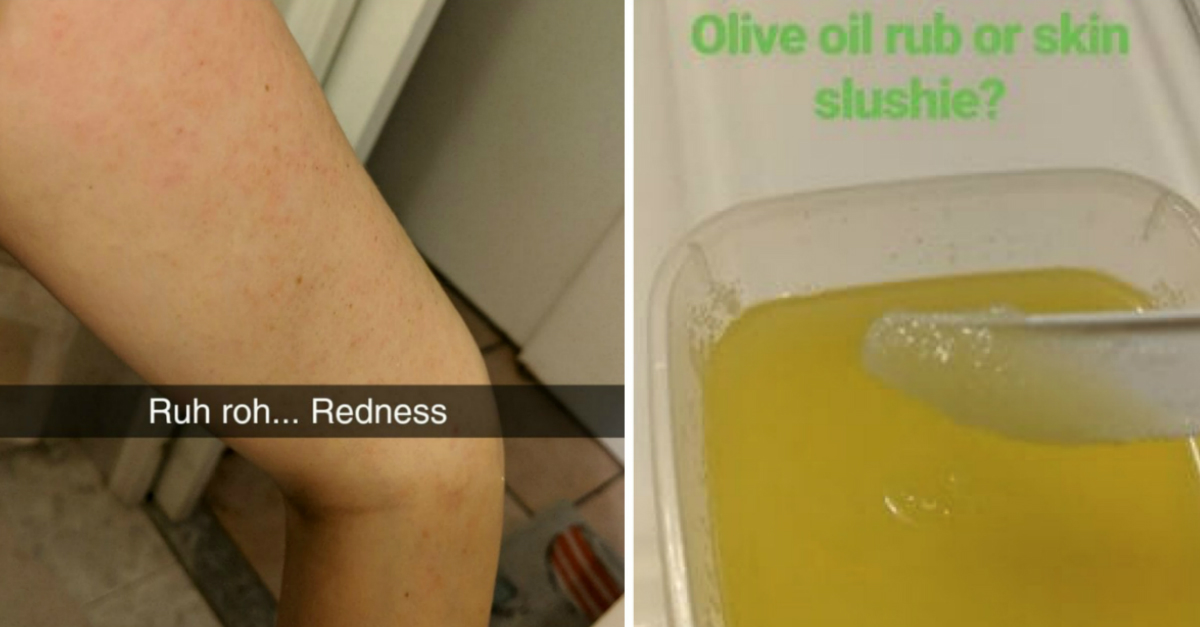
Here's a little story to start this one off: Once upon a time, I was 11 years old and wanted to shave my legs. A few of my friends had started shaving theirs, and I didn't want to get left behind. This was also not a conversation I felt like having with my mom, so I took matters into my own hands. Late one night while everyone in my household was asleep, I got one of those battery-operated infomercial mustache-grooming tools. About two hours later, I finished dry-shaving both of my legs, feeling incredibly mature.
About a week later, I was filled with panic. My legs were covered in bumps. I'd seen commercials for razor burn and thought it might be that. The thing is, those bumps never really went away. I picked at them, thinking they were pimples, but they wouldn't budge. It wasn't until I was a little bit older and had a cell phone where I could explore Google in private that I learned what I'd really done was aggravate a skin condition I didn't know I had. That was keratosis pilaris.
Keratosis pilaris, which is often referred to as KP or "chicken skin," is when an overproduction of keratin, a structural protein in skin, clogs hair follicles. According to the American Academy of Dermatology, this often appears in childhood or during teenage years and takes care of itself by your mid-20s.
Well, folks, I'm just two months shy of 27, and my KP is relentless. The longest I've ever been rid of it was during the dicey period of 2009-2011 when a guy I was dating insisted that I go bed-tanning regularly. While I wouldn't dream of subjecting my skin to that now, it seemed like a viable solution at the time.
Since then, I've tried more practical remedies. I exfoliate and moisturize regularly. I use a body wash that's plant-derived, nontoxic, and sulfate-free. I research new developments in lotions at least once a year. I try to do my best by my skin, but my efforts still fall a little flat. With that in mind, I got back to researching to try some other ways of clearing up my KP. Here's how it all went.
Method 1: Yogurt and Sugar Scrub
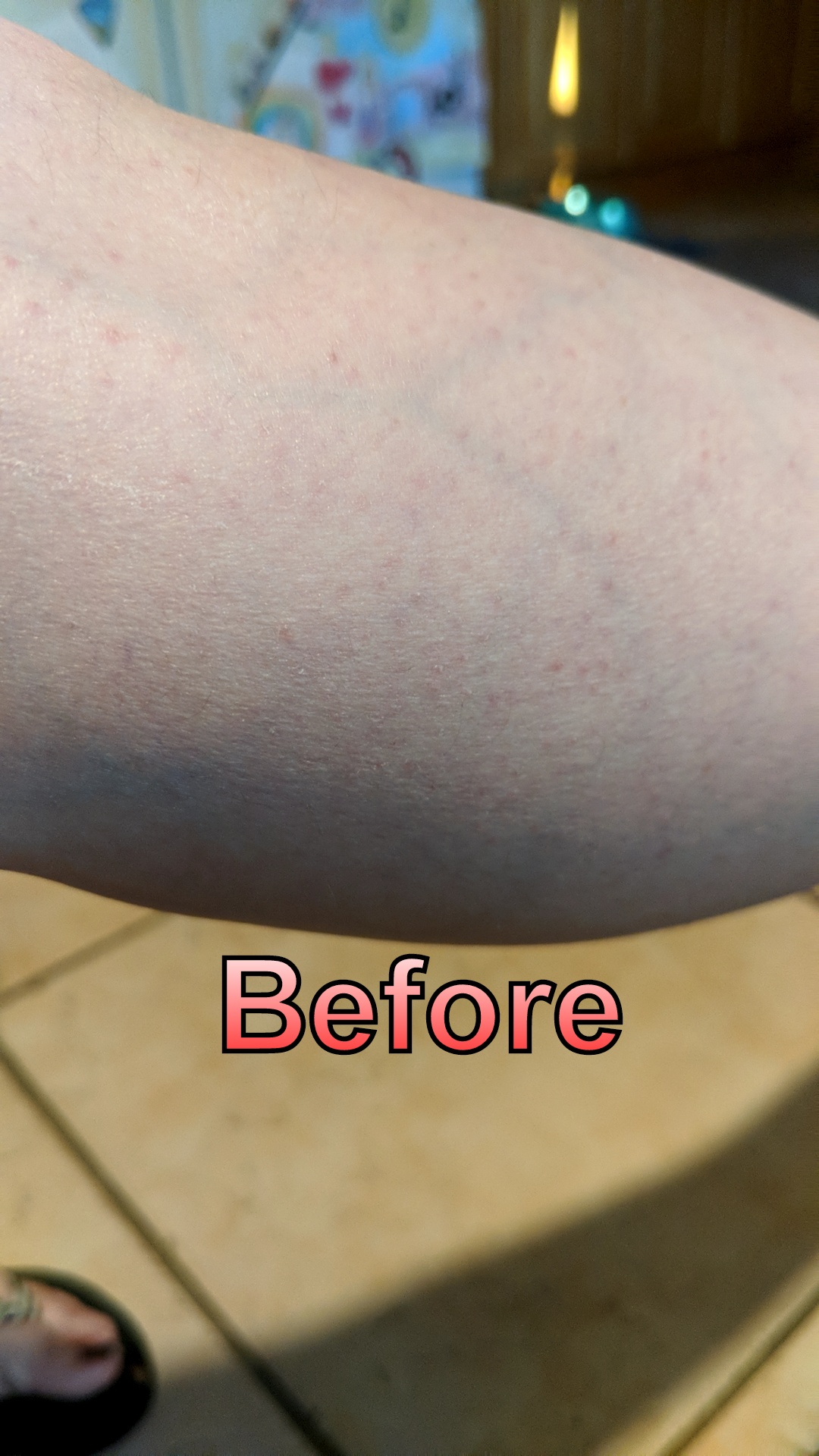
My first attempt was the yogurt-sugar scrub. The yogurt absorbs the sugar very easily, so you need to put a good amount in to make sure it works as an exfoliant. Exact amounts aren't listed; I used 2 tablespoons of yogurt and 1.5 tablespoons of sugar.

I scrubbed this into my skin for about five minutes. My dog watched longingly from afar, dying to lick it off my leg. Pro tip: Don't torture your pets by coating your body with food.

The recommendation is to use it three to four times a week. After three, I definitely saw a reduction in redness. The bumps are still there, although not as prominent.
Method 2: Baking Soda Scrub
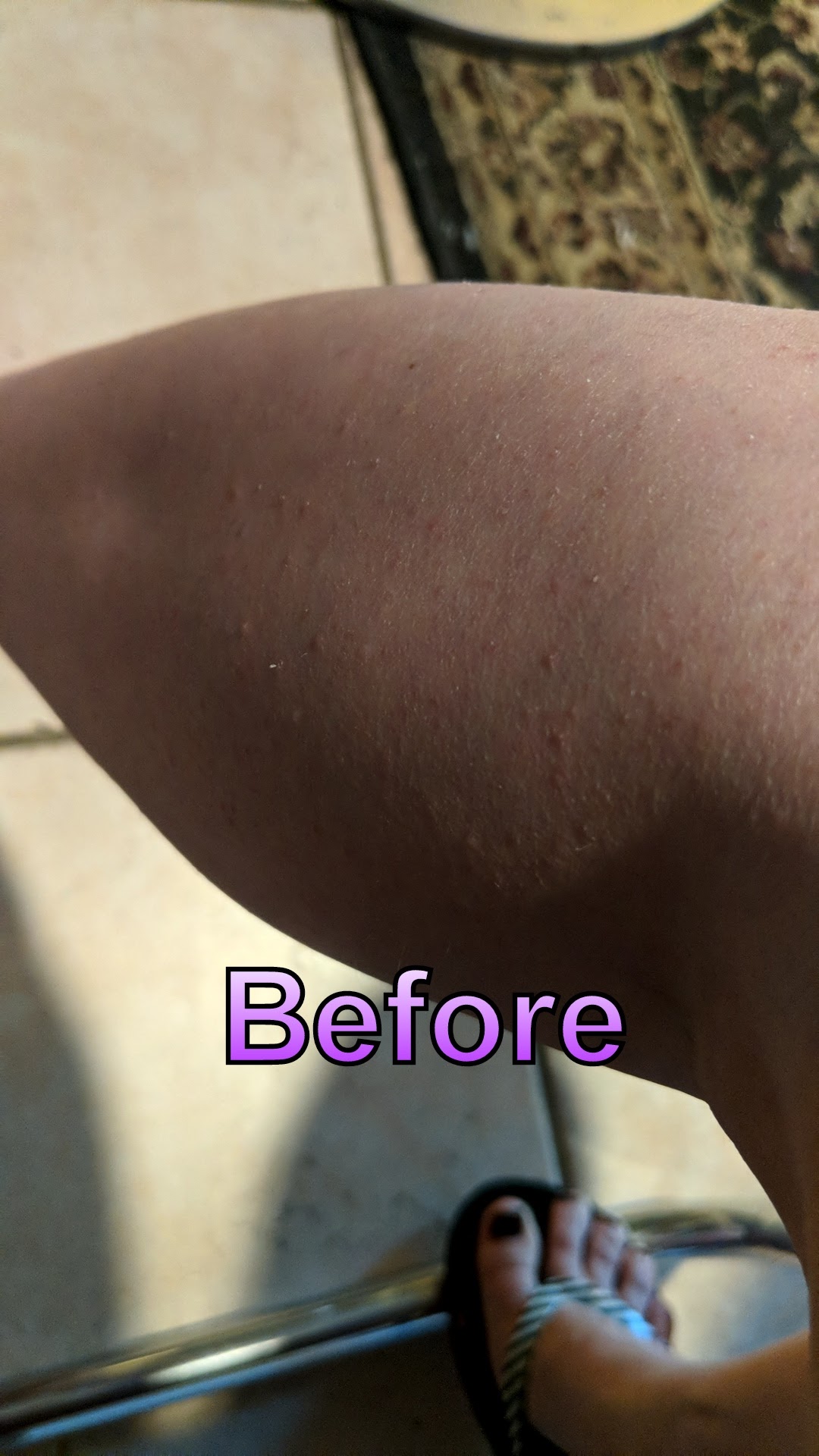
The proportions here are simple. It's a 1:1 mix of baking soda and salt, with enough water to make it a paste-like consistency.
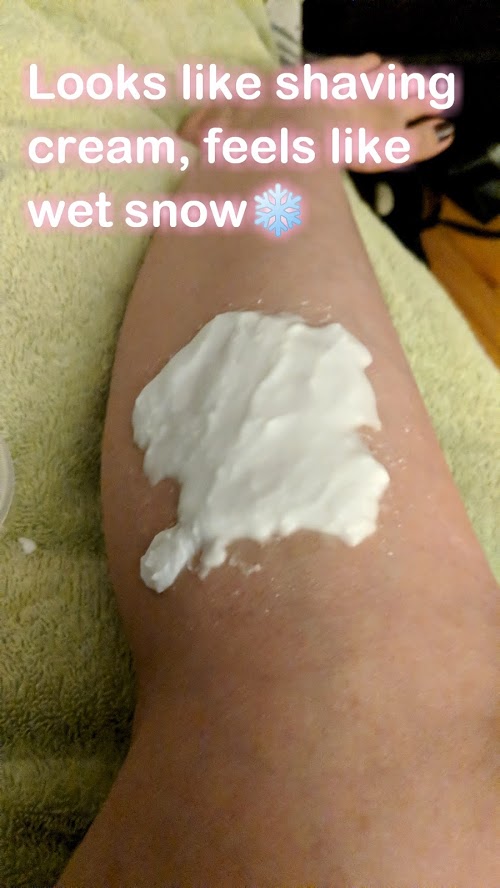
This was probably a little too thick, but I got it on, and it felt like really wet snow. The graininess might bother other people, but I have a weird affinity for textures, so I enjoyed it.
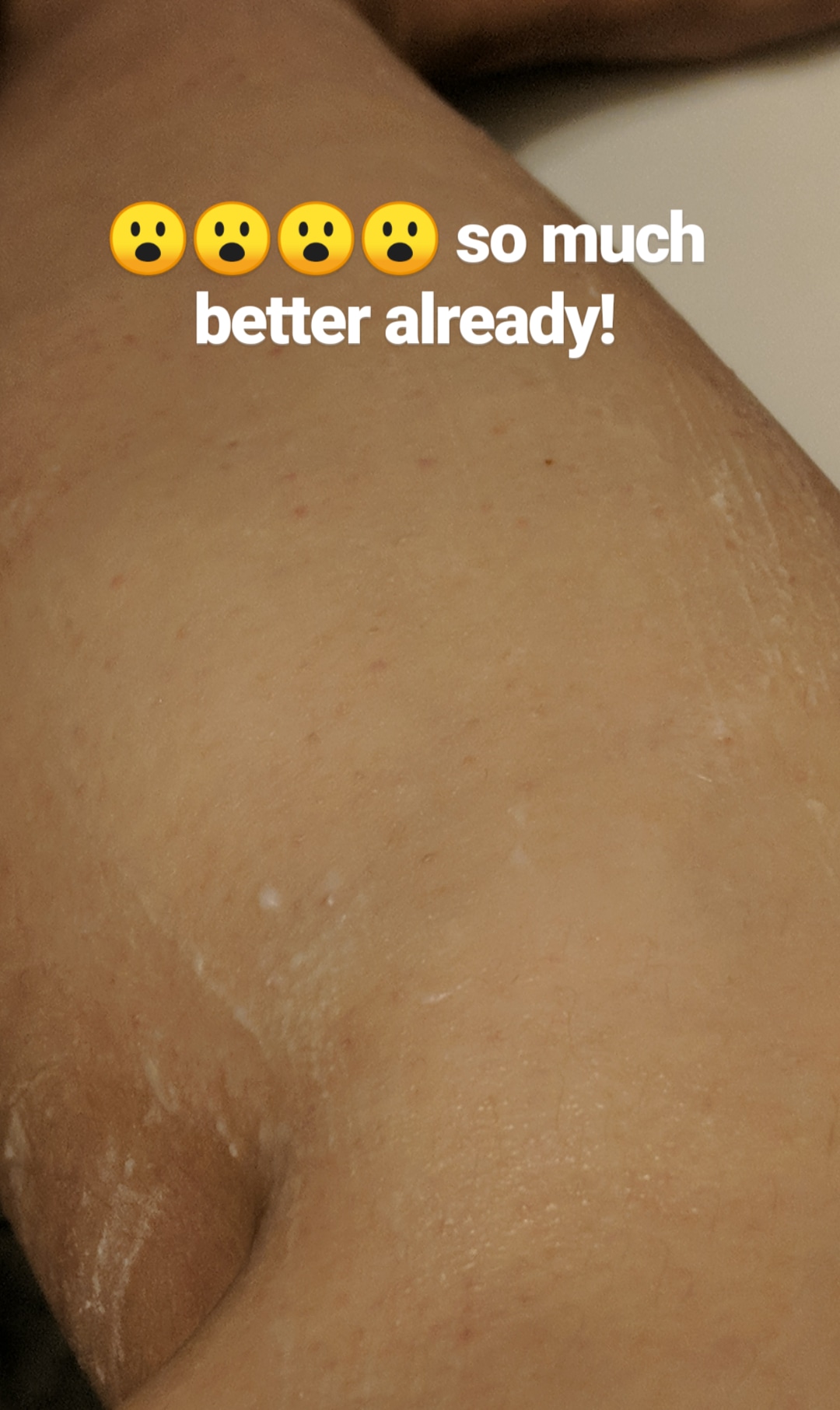
I was SHOCKED. I'd heard about the baking soda fix before, and I could've sworn I tried it. I must not have, though, because my jaw actually dropped when I washed this off. The redness had reduced dramatically, and my skin felt smoother. By the second use, I felt like there was some real progress.
Method 3: Vitamin A Oil
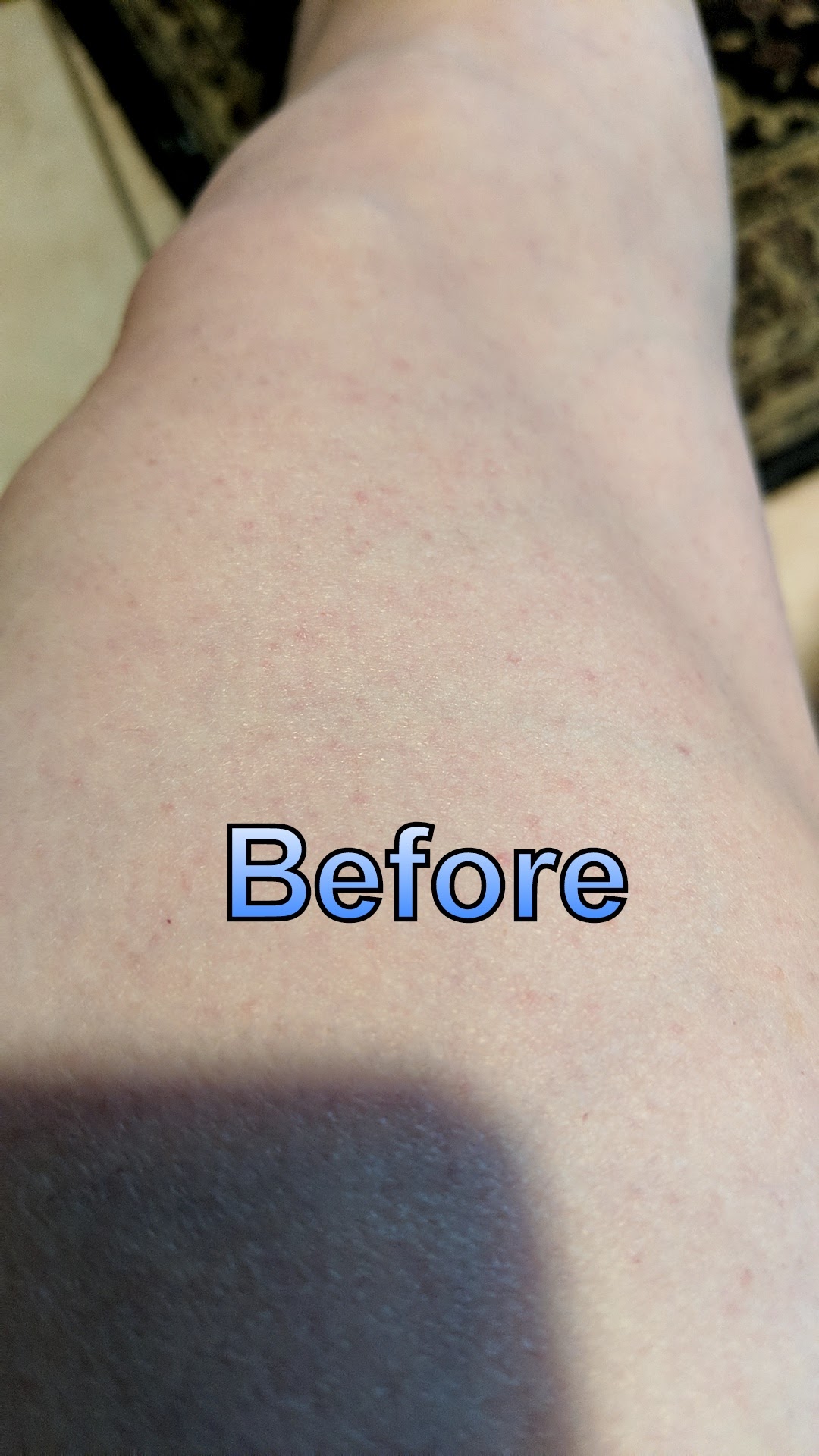
This is another simple fix. Get vitamin A capsules and break them open on your skin. Massage the oil into your skin. Let it sit for five to 10 minutes before washing it off.
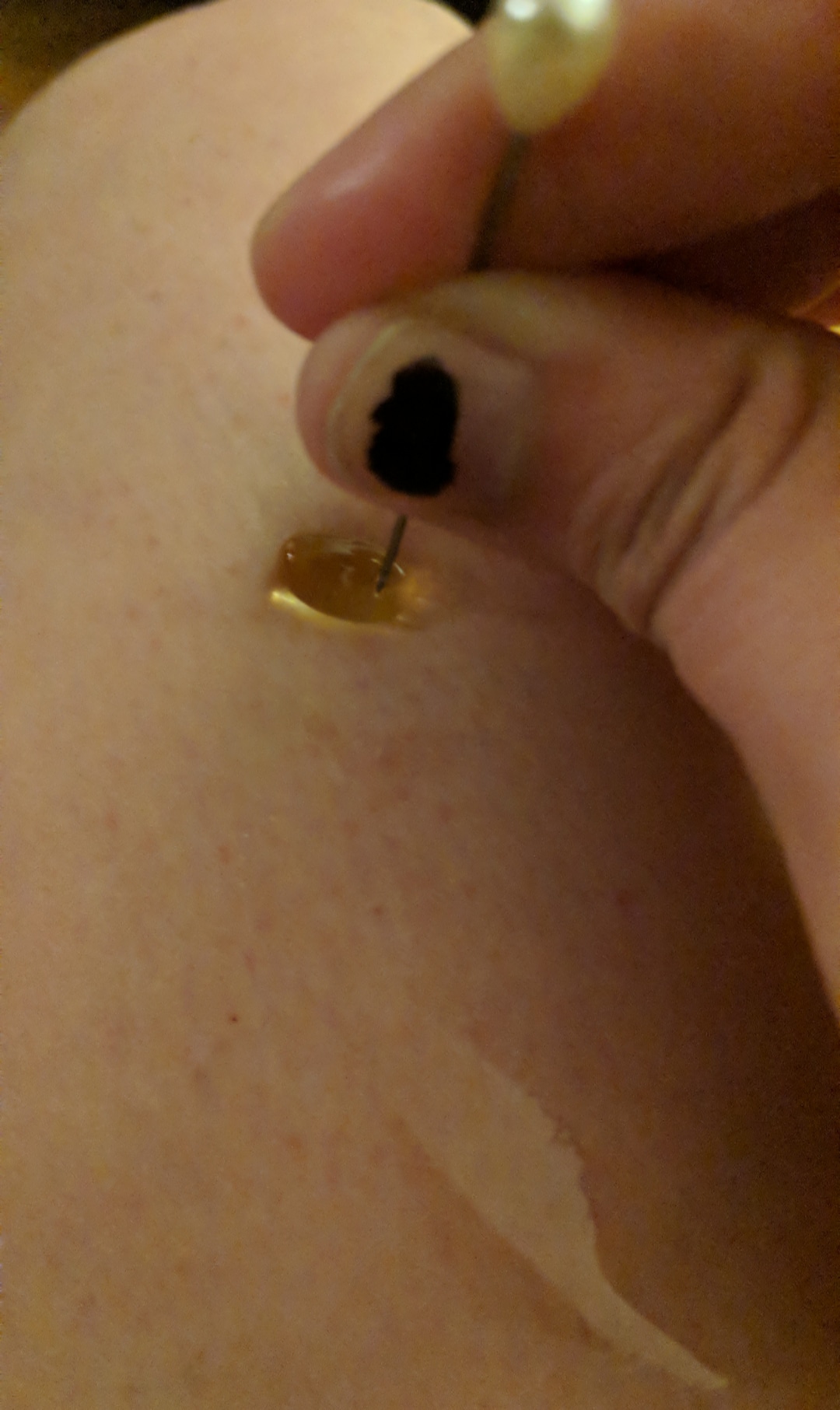
I ran into a little issue in that after searching three stores, I couldn't find capsules. I settled for soft gel caps. With a pin, I stabbed the soft gel caps and squirted the oil onto my skin.

It soaked into my skin nicely, but I was not feeling the smell. It nauseated me, but I'm also pretty sensitive to smells. I left it on my skin for about 15 minutes, then rinsed it off.
Method 4: Olive Oil and Salt Skin Rub
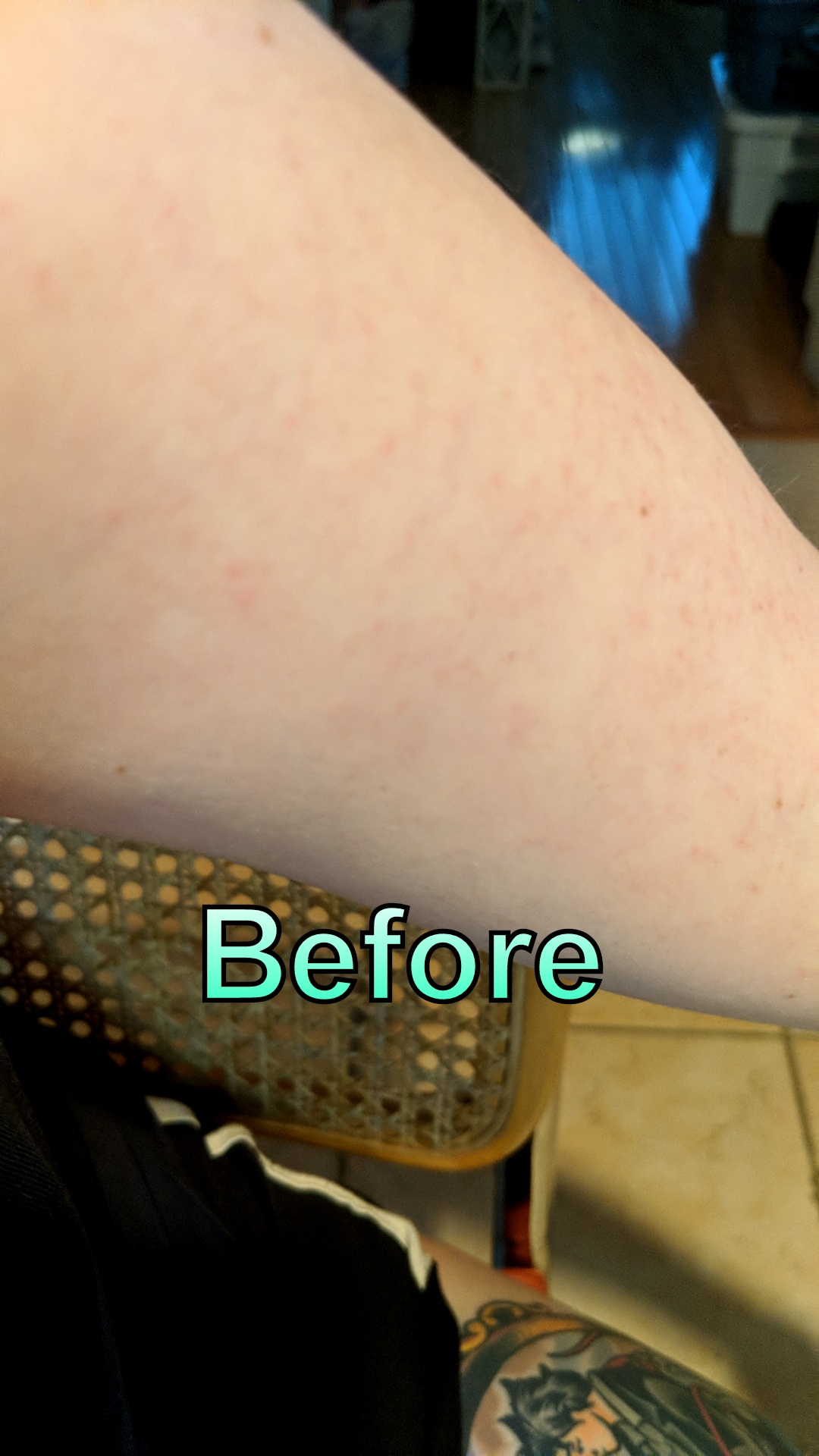
For this, you'll need 2 tablespoons of olive oil and 3 tablespoons of table salt.
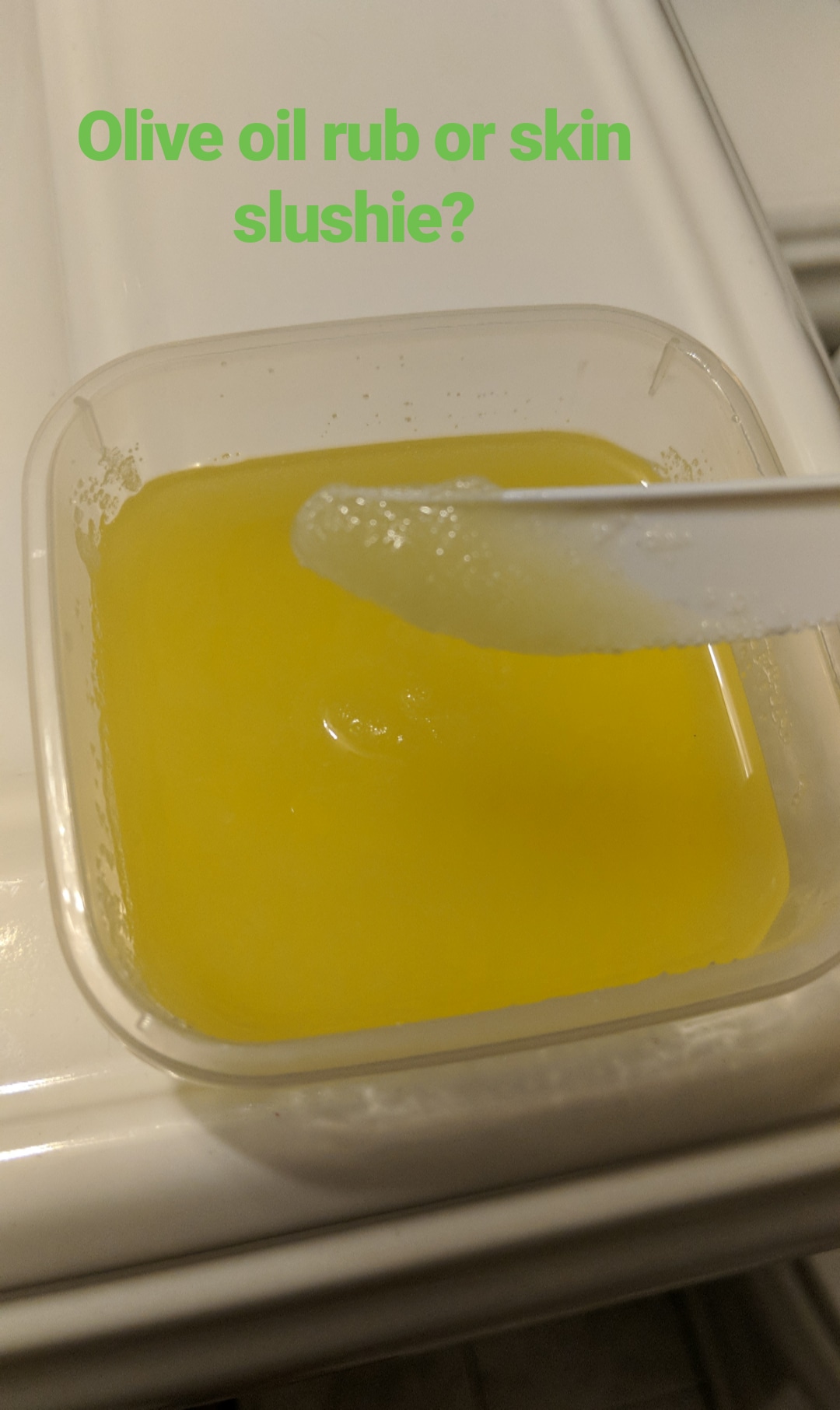
This looked really gross and really awesome at the same time. It definitely felt coarser than anything else I'd applied on my skin.
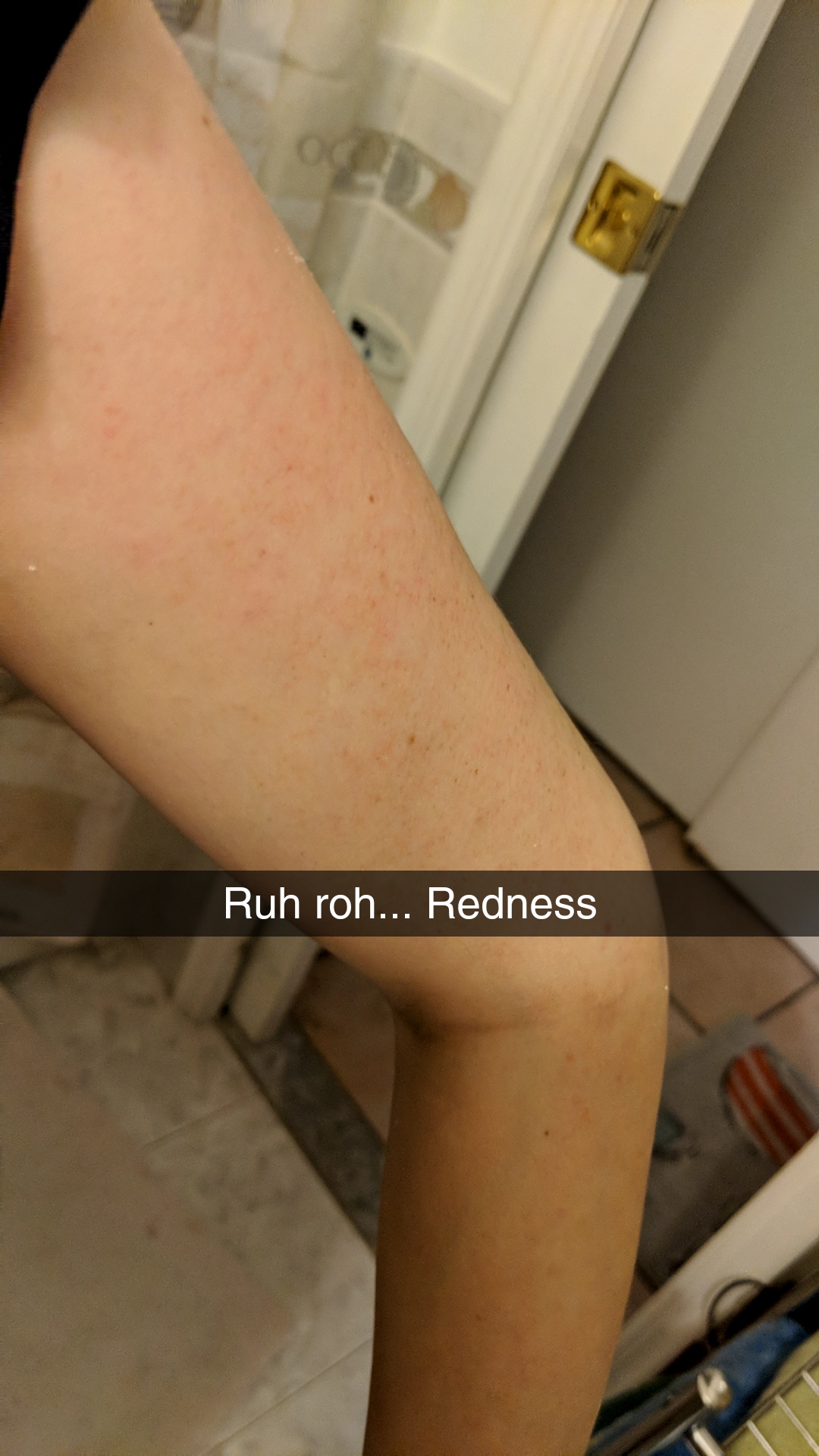
While I was rubbing it into my skin, I watched my arm turn bright red. As I rinsed it off, it continued turning bright red. It felt soft and wonderful, but I noticed some tiny spots of blood. This was a little too abrasive for me, but I can totally see how it might help.
Method 5: Korean Italy Towel
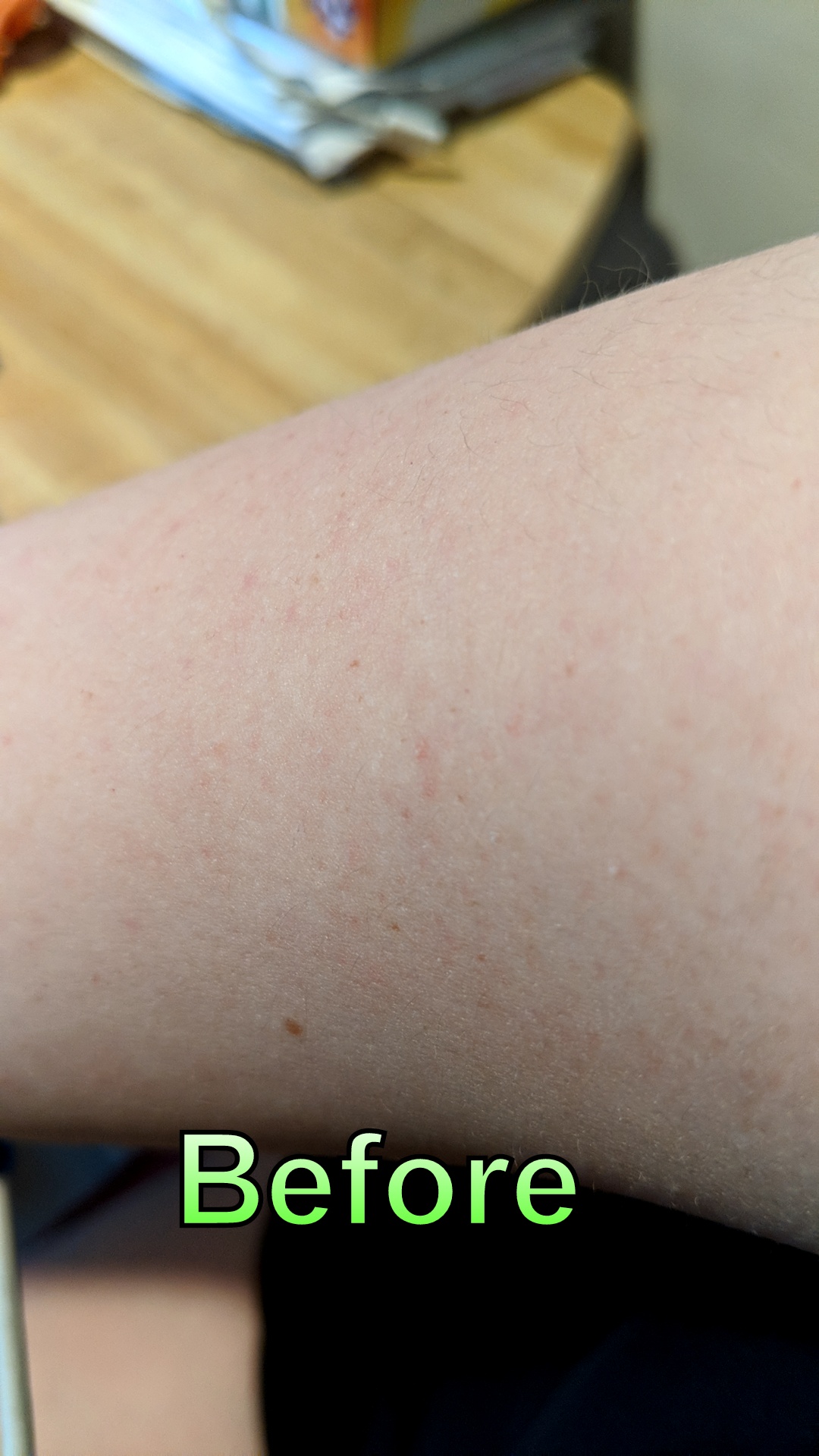
As I mentioned before, I'm always on the hunt for products that can help my skin situation. When I heard about this towel, I thought it was too good to be true. Then when I saw it only costs a few bucks, I was almost sure of it. For the sake of science, I had to try it.
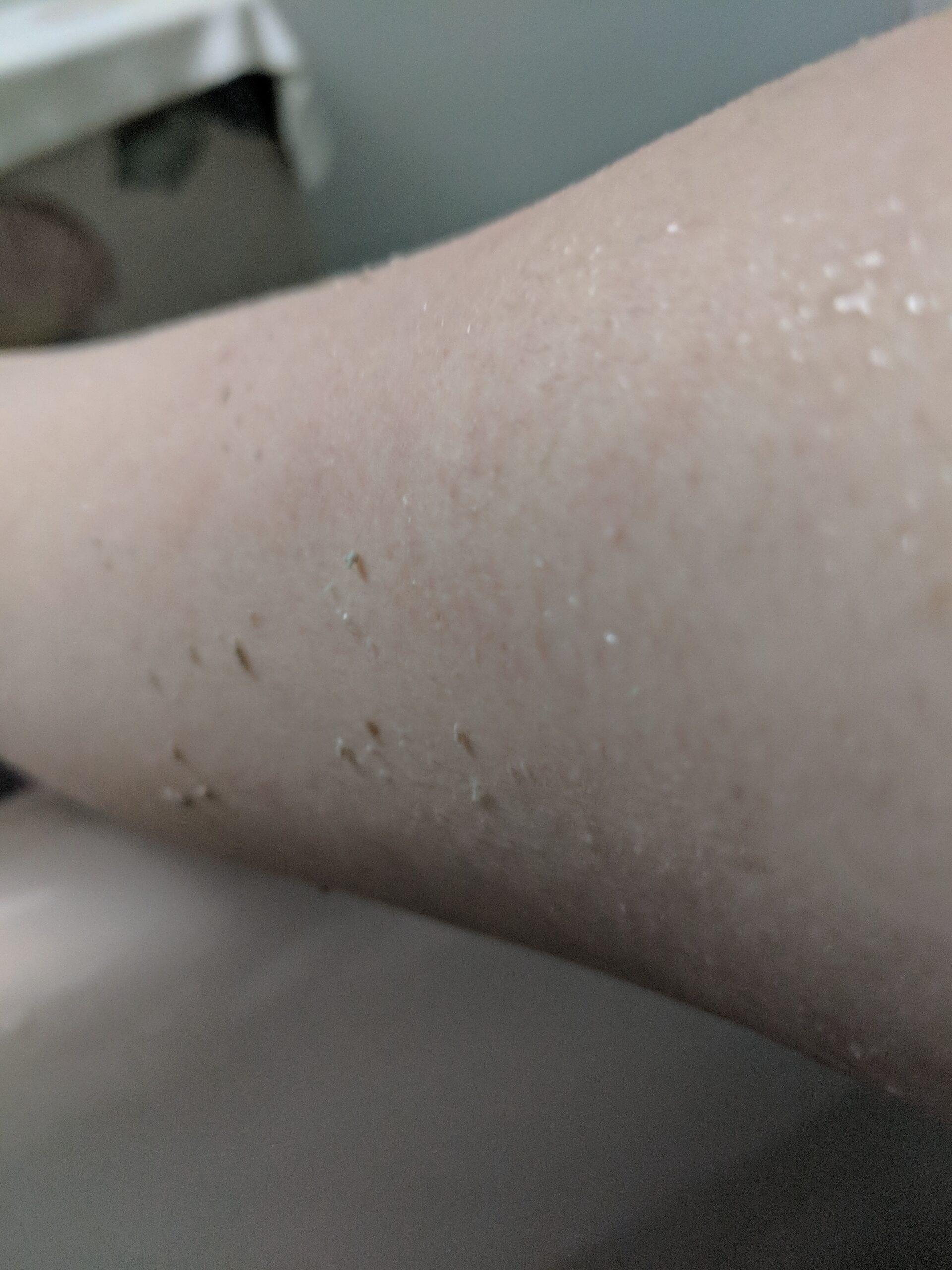
The directions are pretty simple. For 15 to 20 minutes, soak in the tub. Then, in small circular motions, gently scrub up and down the affected area.
Be prepared to see an insane amount of dead skin come off your body; it was disgusting and satisfying in all the best ways. Make sure to moisturize once you're done bathing!
It's also important to note that you should repeat treatment no more than three times a week.
While all of these treatments weren't necessarily for me, I can see the value in each of them. Personally, I'll be incorporating the baking soda scrub and Korean Italy towel.
The key to any treatment, however, is consistency. You might see a great amount of progress in a week, but if you don't stick to it and see it through, you'll never get exactly what you're looking for. Knowing the intricacies of your skin is also super important, so make sure to consult your dermatologist before you self-diagnose (with KP or anything else) and treat an issue. I'm hoping that a few months down the line, I can say my chicken skin has flown the coop!




